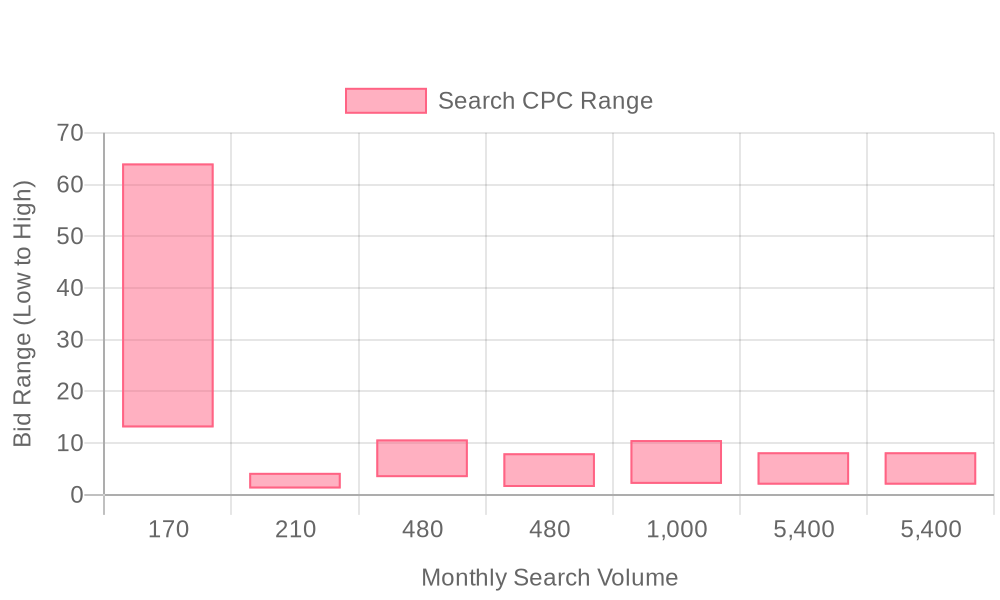https://www.sona.com/blog/maximize-roi-google-ads-strategies-for-service-businesses,https://www.sona.com/blog/meta-ads-for-service-businesses-a-comprehensive-setup-guide,https://www.sona.com/blog/google-ads-for-advertising-services-a-comprehensive-setup-guide
https://www.sona.com/blog/google-ads-for-car-dealers-step-by-step,https://www.sona.com/blog/google-ads-for-used-car-dealers-step-by-step,https://www.sona.com/blog/how-to-optimize-google-ads-for-car-dealership-success
https://www.sona.com/blog/google-ads-for-solar-energy-contractors-a-comprehensive-setup-guide,https://www.sona.com/blog/google-ads-for-home-energy-performance-contractors-a-comprehensive-setup-guide,https://www.sona.com/blog/google-ads-for-power-plant-maintenance-services-step-by-step
https://www.sona.com/blog/linkedin-ads-for-accommodation-hospitality-a-comprehensive-setup-guide,https://www.sona.com/blog/linkedin-ads-for-the-hospitality-industry-a-comprehensive-setup-guide,https://www.sona.com/blog/google-ads-for-tourist-accommodations-a-comprehensive-setup-guide
https://www.sona.com/blog/a-step-by-step-guide-to-setting-up-google-ads-for-your-hotel,https://www.sona.com/blog/linkedin-ads-for-accommodation-hospitality-a-comprehensive-setup-guide,https://www.sona.com/blog/linkedin-ads-for-the-hospitality-industry-a-comprehensive-setup-guide
https://www.sona.com/blog/boost-your-mortgage-business-with-targeted-google-ads,https://www.sona.com/blog/google-ads-for-home-buying-services-a-comprehensive-setup-guide,https://www.sona.com/blog/google-ads-for-real-estate-lending-services-a-comprehensive-setup-guide
https://www.sona.com/blog/boost-your-mortgage-business-with-targeted-google-ads,https://www.sona.com/blog/how-financial-advisors-can-optimize-google-ads-campaigns,https://www.sona.com/blog/google-ads-for-real-estate-lending-services-a-comprehensive-setup-guide
https://www.sona.com/blog/essential-tips-for-crafting-effective-google-ads-for-legal-services,https://www.sona.com/blog/google-ads-for-attorney-advertising-a-comprehensive-setup-guide,https://www.sona.com/blog/unlocking-success-how-lawyers-can-leverage-google-ads-effectively
https://www.sona.com/blog/essential-tips-for-crafting-effective-google-ads-for-legal-services,https://www.sona.com/blog/google-ads-for-attorney-advertising-a-comprehensive-setup-guide,https://www.sona.com/blog/unlocking-success-how-lawyers-can-leverage-google-ads-effectively
https://www.sona.com/blog/essential-tips-for-crafting-effective-google-ads-for-legal-services,https://www.sona.com/blog/google-ads-for-attorney-advertising-a-comprehensive-setup-guide,https://www.sona.com/blog/unlocking-success-how-lawyers-can-leverage-google-ads-effectively
https://www.sona.com/blog/essential-tips-for-crafting-effective-google-ads-for-legal-services,https://www.sona.com/blog/google-ads-for-attorney-advertising-a-comprehensive-setup-guide,https://www.sona.com/blog/unlocking-success-how-lawyers-can-leverage-google-ads-effectively
https://www.sona.com/blog/google-ads-for-plumbing-services-a-comprehensive-setup-guide,https://www.sona.com/blog/google-ads-for-plumbing-and-heating-a-comprehensive-setup-guide,https://www.sona.com/blog/google-ads-strategies-for-plumbers-boost-your-online-visibility
https://www.sona.com/blog/boost-your-dental-practice-with-effective-google-ads-campaigns,https://www.sona.com/blog/google-ads-for-dental-marketing-a-comprehensive-setup-guide,https://www.sona.com/blog/google-ads-for-dental-assistant-training-programs-step-by-step
https://www.sona.com/blog/maximize-roi-google-ads-strategies-for-service-businesses,https://www.sona.com/blog/google-ads-for-advertising-services-a-comprehensive-setup-guide,https://www.sona.com/blog/google-ads-for-cleaning-services-a-comprehensive-setup-guide
https://www.sona.com/blog/linkedin-ads-for-accommodation-hospitality-a-comprehensive-setup-guide,https://www.sona.com/blog/linkedin-ads-for-accommodation-hospitality-a-comprehensivee-setup-guide,https://www.sona.com/blog/google-ads-for-dining-car-services-a-comprehensive-setup-guide
https://www.sona.com/blog/linkedin-ads-for-accommodation-hospitality-a-comprehensivee-setup-guide, https://www.sona.com/blog/google-ads-for-tourist-accommodations-a-comprehensive-setup-guide, https://www.sona.com/blog/google-ads-for-travel-and-tourism-education-a-comprehensive-setup-guide
https://www.sona.com/blog/google-ads-for-hotel, https://www.sona.com/blog/google-ads-for-tourist-accommodations-a-comprehensive-setup-guide, https://www.sona.com/blog/google-ads-for-travel-and-tourism-education-a-comprehensive-setup-guide
https://www.sona.com/blog/how-to-import-ad-platform-cost-data-into-google-analytics,https://www.sona.com/blog/the-essential-guide-to-account-based-marketing-empower-your-go-to-market-team-for-success,https://www.sona.com/blog/the-ultimate-guide-to-b2b-marketing-reports-for-your-cmo-dashboard
https://www.sona.com/blog/how-to-import-ad-platform-cost-data-into-google-analytics,https://www.sona.com/blog/measuring-marketings-influence-on-the-sales-pipeline,https://www.sona.com/blog/the-ultimate-guide-to-b2b-marketing-reports-for-your-cmo-dashboard
https://www.sona.com/blog/how-to-import-ad-platform-cost-data-into-google-analytics,https://www.sona.com/blog/the-essential-guide-to-intent-data-leveraging-signals-to-increase-revenue,https://www.sona.com/blog/whats-the-best-way-to-determine-the-optimal-media-mix
https://www.sona.com/blog/how-to-import-ad-platform-cost-data-into-google-analytics,https://www.sona.com/blog/the-essential-guide-to-account-based-marketing-empower-your-go-to-market-team-for-success,https://www.sona.com/blog/the-ultimate-guide-to-b2b-marketing-reports-for-your-cmo-dashboard
https://www.sona.com/blog/how-to-import-ad-platform-cost-data-into-google-analytics,https://www.sona.com/playbook/intent-driven-retargeting-driving-high-impact-campaigns-with-first-party-intent-signals,https://www.sona.com/playbook/convert-more-hustle-less-the-buying-stage-segmentation-advantage
https://www.sona.com/blog/how-to-import-ad-platform-cost-data-into-google-analytics,https://www.sona.com/blog/the-ultimate-guide-to-b2b-marketing-reports-for-your-cmo-dashboard,https://www.sona.com/blog/the-essential-guide-to-account-based-marketing-empower-your-go-to-market-team-for-success
https://www.sona.com/blog/how-to-import-ad-platform-cost-data-into-google-analytics,https://www.sona.com/blog/the-ultimate-guide-to-b2b-marketing-reports-for-your-cmo-dashboard,https://www.sona.com/playbook/intent-driven-retargeting-driving-high-impact-campaigns-with-first-party-intent-signals
https://www.sona.com/blog/the-ultimate-guide-to-b2b-marketing-reports-for-your-cmo-dashboard,https://www.sona.com/blog/the-essential-guide-to-account-based-marketing-empower-your-go-to-market-team-for-success,https://www.sona.com/blog/the-essential-guide-to-intent-data-leveraging-signals-to-increase-revenue
https://www.sona.com/blog/how-to-import-ad-platform-cost-data-into-google-analytics,https://www.sona.com/playbook/intent-driven-retargeting-driving-high-impact-campaigns-with-first-party-intent-signals,https://www.sona.com/playbook/convert-more-hustle-less-the-buying-stage-segmentation-advantage
https://www.sona.com/blog/how-to-import-ad-platform-cost-data-into-google-analytics,https://www.sona.com/blog/the-essential-guide-to-intent-data-leveraging-signals-to-increase-revenue,https://www.sona.com/playbook/intent-driven-retargeting-driving-high-impact-campaigns-with-first-party-intent-signals
https://www.sona.com/blog/how-to-import-ad-platform-cost-data-into-google-analytics,https://www.sona.com/blog/the-ultimate-guide-to-b2b-marketing-reports-for-your-cmo-dashboard,https://www.sona.com/blog/measuring-marketings-influence-on-the-sales-pipeline
https://www.sona.com/blog/how-to-import-ad-platform-cost-data-into-google-analytics,https://www.sona.com/blog/intent-driven-retargeting-driving-high-impact-campaigns-with-first-party-intent-signals,https://www.sona.com/blog/measuring-marketings-influence-on-the-sales-pipeline
https://www.sona.com/blog/how-to-import-ad-platform-cost-data-into-google-analytics,https://www.sona.com/blog/the-ultimate-guide-to-b2b-marketing-reports-for-your-cmo-dashboard,https://www.sona.com/blog/measuring-marketings-influence-on-the-sales-pipeline
https://www.sona.com/blog/how-to-import-ad-platform-cost-data-into-google-analytics,https://www.sona.com/blog/the-essential-guide-to-intent-data-leveraging-signals-to-increase-revenue,https://www.sona.com/blog/the-ultimate-guide-to-b2b-marketing-reports-for-your-cmo-dashboard
https://www.sona.com/blog/how-to-import-ad-platform-cost-data-into-google-analytics,https://www.sona.com/blog/measuring-marketings-influence-on-the-sales-pipeline,https://www.sona.com/blog/the-ultimate-guide-to-b2b-marketing-reports-for-your-cmo-dashboard
https://www.sona.com/blog/how-to-import-ad-platform-cost-data-into-google-analytics,https://www.sona.com/blog/the-essential-guide-to-intent-data-leveraging-signals-to-increase-revenue,https://www.sona.com/blog/the-ultimate-guide-to-b2b-marketing-reports-for-your-cmo-dashboard
https://www.sona.com/blog/how-to-import-ad-platform-cost-data-into-google-analytics,https://www.sona.com/blog/the-essential-guide-to-offline-attribution-maximizing-roi-through-offline-channels,https://www.sona.com/blog/the-ultimate-guide-to-b2b-marketing-reports-for-your-cmo-dashboard
https://www.sona.com/blog/how-to-import-ad-platform-cost-data-into-google-analytics,https://www.sona.com/blog/the-essential-guide-to-account-based-marketing-empower-your-go-to-market-team-for-success,https://www.sona.com/blog/the-ultimate-guide-to-b2b-marketing-reports-for-your-cmo-dashboard
https://www.sona.com/blog/how-to-import-ad-platform-cost-data-into-google-analytics,https://www.sona.com/blog/the-essential-guide-to-intent-data-leveraging-signals-to-increase-revenue,https://www.sona.com/blog/whats-the-best-way-to-determine-the-optimal-media-mix
https://www.sona.com/blog/how-to-import-ad-platform-cost-data-into-google-analytics,https://www.sona.com/playbook/intent-driven-retargeting-driving-high-impact-campaigns-with-first-party-intent-signals,https://www.sona.com/playbook/convert-more-hustle-less-the-buying-stage-segmentation-advantage
https://www.sona.com/blog/how-to-import-ad-platform-cost-data-into-google-analytics,https://www.sona.com/blog/measuring-marketings-influence-on-the-sales-pipeline,https://www.sona.com/blog/the-ultimate-guide-to-b2b-marketing-reports-for-your-cmo-dashboard
https://www.sona.com/blog/how-to-import-ad-platform-cost-data-into-google-analytics,https://www.sona.com/blog/the-essential-guide-to-account-based-marketing-empower-your-go-to-market-team-for-success,https://www.sona.com/blog/the-ultimate-guide-to-b2b-marketing-reports-for-your-cmo-dashboard
https://www.sona.com/blog/how-to-import-ad-platform-cost-data-into-google-analytics,https://www.sona.com/blog/the-ultimate-guide-to-b2b-marketing-reports-for-your-cmo-dashboard,https://www.sona.com/ask-sona/whats-the-best-way-to-determine-the-optimal-media-mix
https://www.sona.com/blog/how-to-import-ad-platform-cost-data-into-google-analytics,https://www.sona.com/blog/the-ultimate-guide-to-b2b-marketing-reports-for-your-cmo-dashboard,https://www.sona.com/playbook/intent-driven-retargeting-driving-high-impact-campaigns-with-first-party-intent-signals
https://www.sona.com/blog/how-to-import-ad-platform-cost-data-into-google-analytics,https://www.sona.com/blog/the-essential-guide-to-account-based-marketing-empower-your-go-to-market-team-for-success,https://www.sona.com/blog/the-ultimate-guide-to-b2b-marketing-reports-for-your-cmo-dashboard
https://www.sona.com/blog/how-to-import-ad-platform-cost-data-into-google-analytics,https://www.sona.com/blog/intent-driven-retargeting-driving-high-impact-campaigns-with-first-party-intent-signals,https://www.sona.com/blog/precision-prospecting-leveraging-intent-signals-in-your-sales-outreach
https://www.sona.com/blog/how-to-import-ad-platform-cost-data-into-google-analytics,https://www.sona.com/blog/the-ultimate-guide-to-b2b-marketing-reports-for-your-cmo-dashboard,https://www.sona.com/playbook/intent-driven-retargeting-driving-high-impact-campaigns-with-first-party-intent-signals
https://www.sona.com/blog/how-to-import-ad-platform-cost-data-into-google-analytics,https://www.sona.com/blog/the-ultimate-guide-to-b2b-marketing-reports-for-your-cmo-dashboard,https://www.sona.com/playbook/intent-driven-retargeting-driving-high-impact-campaigns-with-first-party-intent-signals
https://www.sona.com/blog/how-to-import-ad-platform-cost-data-into-google-analytics,https://www.sona.com/blog/the-essential-guide-to-account-based-marketing-empower-your-go-to-market-team-for-success,https://www.sona.com/blog/the-ultimate-guide-to-b2b-marketing-reports-for-your-cmo-dashboard
https://www.sona.com/blog/how-to-import-ad-platform-cost-data-into-google-analytics,https://www.sona.com/blog/the-ultimate-guide-to-b2b-marketing-reports-for-your-cmo-dashboard,https://www.sona.com/ask-sona/whats-the-best-way-to-determine-the-optimal-media-mix
https://www.sona.com/blog/how-to-import-ad-platform-cost-data-into-google-analytics,https://www.sona.com/blog/the-essential-guide-to-account-based-marketing-empower-your-go-to-market-team-for-success,https://www.sona.com/blog/the-ultimate-guide-to-b2b-marketing-reports-for-your-cmo-dashboard
https://www.sona.com/blog/how-to-import-ad-platform-cost-data-into-google-analytics,https://www.sona.com/blog/measuring-marketings-influence-on-the-sales-pipeline,https://www.sona.com/blog/the-ultimate-guide-to-b2b-marketing-reports-for-your-cmo-dashboard
https://www.sona.com/blog/how-to-import-ad-platform-cost-data-into-google-analytics,https://www.sona.com/blog/the-ultimate-guide-to-b2b-marketing-reports-for-your-cmo-dashboard,https://www.sona.com/ask-sona/whats-the-best-way-to-determine-the-optimal-media-mix
https://www.sona.com/blog/how-to-import-ad-platform-cost-data-into-google-analytics,https://www.sona.com/blog/intent-driven-retargeting-driving-high-impact-campaigns-with-first-party-intent-signals,https://www.sona.com/blog/precision-prospecting-leveraging-intent-signals-in-your-sales-outreach
https://www.sona.com/blog/how-to-import-ad-platform-cost-data-into-google-analytics,https://www.sona.com/blog/the-ultimate-guide-to-b2b-marketing-reports-for-your-cmo-dashboard,https://www.sona.com/blog/why-is-marketing-performance-management-critical-for-every-marketer
https://www.sona.com/blog/how-to-import-ad-platform-cost-data-into-google-analytics,https://www.sona.com/blog/the-ultimate-guide-to-b2b-marketing-reports-for-your-cmo-dashboard,https://www.sona.com/blog/measuring-marketings-influence-on-the-sales-pipeline
https://www.sona.com/blog/how-to-import-ad-platform-cost-data-into-google-analytics, https://www.sona.com/blog/the-essential-guide-to-account-based-marketing-empower-your-go-to-market-team-for-success, https://www.sona.com/blog/the-ultimate-guide-to-b2b-marketing-reports-for-your-cmo-dashboard
https://www.sona.com/blog/how-to-import-ad-platform-cost-data-into-google-analytics,https://www.sona.com/blog/the-ultimate-guide-to-b2b-marketing-reports-for-your-cmo-dashboard,https://www.sona.com/blog/measuring-marketings-influence-on-the-sales-pipeline
https://www.sona.com/blog/how-to-import-ad-platform-cost-data-into-google-analytics,https://www.sona.com/blog/integrate-sona-with-hubspot-crm-unify-data-to-supercharge-your-demand-generation,https://www.sona.com/blog/the-essential-guide-to-intent-data-leveraging-signals-to-increase-revenue
https://www.sona.com/blog/how-to-import-ad-platform-cost-data-into-google-analytics,https://www.sona.com/blog/the-essential-guide-to-account-based-marketing-empower-your-go-to-market-team-for-success,https://www.sona.com/blog/the-ultimate-guide-to-b2b-marketing-reports-for-your-cmo-dashboard
https://www.sona.com/blog/how-to-import-ad-platform-cost-data-into-google-analytics,https://www.sona.com/blog/the-essential-guide-to-intent-data-leveraging-signals-to-increase-revenue,https://www.sona.com/playbook/intent-driven-retargeting-driving-high-impact-campaigns-with-first-party-intent-signals
https://www.sona.com/blog/how-to-import-ad-platform-cost-data-into-google-analytics,https://www.sona.com/blog/the-ultimate-guide-to-b2b-marketing-reports-for-your-cmo-dashboard,https://www.sona.com/ask-sona/whats-the-best-way-to-determine-the-optimal-media-mix
https://www.sona.com/blog/how-to-import-ad-platform-cost-data-into-google-analytics,https://www.sona.com/blog/the-essential-guide-to-account-based-marketing-empower-your-go-to-market-team-for-success,https://www.sona.com/blog/the-ultimate-guide-to-b2b-marketing-reports-for-your-cmo-dashboard
https://www.sona.com/blog/how-to-import-ad-platform-cost-data-into-google-analytics,https://www.sona.com/playbook/intent-driven-retargeting-driving-high-impact-campaigns-with-first-party-intent-signals,https://www.sona.com/playbook/precision-prospecting-leveraging-intent-signals-in-your-sales-outreach
https://www.sona.com/blog/how-to-import-ad-platform-cost-data-into-google-analytics,https://www.sona.com/blog/measuring-marketings-influence-on-the-sales-pipeline,https://www.sona.com/blog/the-essential-guide-to-offline-attribution-maximizing-roi-through-offline-channels
https://www.sona.com/blog/how-to-import-ad-platform-cost-data-into-google-analytics,https://www.sona.com/blog/the-essential-guide-to-offline-attribution-maximizing-roi-through-offline-channels,https://www.sona.com/blog/measuring-marketings-influence-on-the-sales-pipeline
https://www.sona.com/blog/how-to-import-ad-platform-cost-data-into-google-analytics,https://www.sona.com/blog/the-essential-guide-to-offline-attribution-maximizing-roi-through-offline-channels,https://www.sona.com/blog/measuring-marketings-influence-on-the-sales-pipeline
https://www.sona.com/blog/how-to-import-ad-platform-cost-data-into-google-analytics,https://www.sona.com/blog/the-essential-guide-to-account-based-marketing-empower-your-go-to-market-team-for-success,https://www.sona.com/blog/the-ultimate-guide-to-b2b-marketing-reports-for-your-cmo-dashboard
https://www.sona.com/blog/how-to-import-ad-platform-cost-data-into-google-analytics,https://www.sona.com/blog/the-ultimate-guide-to-b2b-marketing-reports-for-your-cmo-dashboard,https://www.sona.com/blog/measuring-marketings-influence-on-the-sales-pipeline
https://www.sona.com/blog/how-to-import-ad-platform-cost-data-into-google-analytics,https://www.sona.com/blog/the-ultimate-guide-to-b2b-marketing-reports-for-your-cmo-dashboard,https://www.sona.com/ask-sona/whats-the-best-way-to-determine-the-optimal-media-mix
https://www.sona.com/blog/how-to-import-ad-platform-cost-data-into-google-analytics,https://www.sona.com/blog/measuring-marketings-influence-on-the-sales-pipeline,https://www.sona.com/blog/the-ultimate-guide-to-b2b-marketing-reports-for-your-cmo-dashboard
https://www.sona.com/blog/how-to-import-ad-platform-cost-data-into-google-analytics,https://www.sona.com/blog/the-essential-guide-to-account-based-marketing-empower-your-go-to-market-team-for-success,https://www.sona.com/blog/the-ultimate-guide-to-b2b-marketing-reports-for-your-cmo-dashboard
https://www.sona.com/blog/how-to-import-ad-platform-cost-data-into-google-analytics,https://www.sona.com/blog/the-ultimate-guide-to-b2b-marketing-reports-for-your-cmo-dashboard,https://www.sona.com/ask-sona/whats-the-best-way-to-determine-the-optimal-media-mix
https://www.sona.com/blog/how-to-import-ad-platform-cost-data-into-google-analytics,https://www.sona.com/blog/the-essential-guide-to-account-based-marketing-empower-your-go-to-market-team-for-success,https://www.sona.com/blog/the-ultimate-guide-to-b2b-marketing-reports-for-your-cmo-dashboard
https://www.sona.com/blog/how-to-import-ad-platform-cost-data-into-google-analytics,https://www.sona.com/blog/the-essential-guide-to-intent-data-leveraging-signals-to-increase-revenue,https://www.sona.com/playbook/intent-driven-retargeting-driving-high-impact-campaigns-with-first-party-intent-signals
https://www.sona.com/blog/how-to-import-ad-platform-cost-data-into-google-analytics,https://www.sona.com/blog/the-ultimate-guide-to-b2b-marketing-reports-for-your-cmo-dashboard,https://www.sona.com/ask-sona/whats-the-best-way-to-determine-the-optimal-media-mix
https://www.sona.com/blog/how-to-import-ad-platform-cost-data-into-google-analytics,https://www.sona.com/blog/intent-driven-retargeting-driving-high-impact-campaigns-with-first-party-intent-signals,https://www.sona.com/blog/the-ultimate-guide-to-b2b-marketing-reports-for-your-cmo-dashboard
https://www.sona.com/blog/how-to-import-ad-platform-cost-data-into-google-analytics,https://www.sona.com/blog/the-ultimate-guide-to-b2b-marketing-reports-for-your-cmo-dashboard,https://www.sona.com/blog/why-is-marketing-performance-management-critical-for-every-marketer
https://www.sona.com/blog/how-to-import-ad-platform-cost-data-into-google-analytics,https://www.sona.com/blog/the-ultimate-guide-to-b2b-marketing-reports-for-your-cmo-dashboard,https://www.sona.com/blog/measuring-marketings-influence-on-the-sales-pipeline
https://www.sona.com/blog/how-to-import-ad-platform-cost-data-into-google-analytics,https://www.sona.com/blog/the-essential-guide-to-account-based-marketing-empower-your-go-to-market-team-for-success,https://www.sona.com/blog/the-ultimate-guide-to-b2b-marketing-reports-for-your-cmo-dashboard
https://www.sona.com/blog/how-to-import-ad-platform-cost-data-into-google-analytics,https://www.sona.com/blog/the-essential-guide-to-offline-attribution-maximizing-roi-through-offline-channels,https://www.sona.com/ask-sona/whats-the-best-way-to-determine-the-optimal-media-mix
https://www.sona.com/blog/how-to-import-ad-platform-cost-data-into-google-analytics,https://www.sona.com/blog/the-ultimate-guide-to-b2b-marketing-reports-for-your-cmo-dashboard,https://www.sona.com/blog/measuring-marketings-influence-on-the-sales-pipeline
https://www.sona.com/blog/how-to-import-ad-platform-cost-data-into-google-analytics,https://www.sona.com/blog/measuring-marketings-influence-on-the-sales-pipeline,https://www.sona.com/blog/the-importance-of-accurate-revenue-attribution
https://www.sona.com/blog/how-to-import-ad-platform-cost-data-into-google-analytics,https://www.sona.com/blog/the-essential-guide-to-account-based-marketing-empower-your-go-to-market-team-for-success,https://www.sona.com/blog/the-ultimate-guide-to-b2b-marketing-reports-for-your-cmo-dashboard
https://www.sona.com/blog/how-to-import-ad-platform-cost-data-into-google-analytics,https://www.sona.com/blog/measuring-marketings-influence-on-the-sales-pipeline,https://www.sona.com/blog/why-is-marketing-performance-management-critical-for-every-marketer
https://www.sona.com/blog/how-to-import-ad-platform-cost-data-into-google-analytics,https://www.sona.com/blog/the-ultimate-guide-to-b2b-marketing-reports-for-your-cmo-dashboard,https://www.sona.com/blog/measuring-marketings-influence-on-the-sales-pipeline
https://www.sona.com/blog/the-essential-guide-to-account-based-marketing-empower-your-go-to-market-team-for-success,https://www.sona.com/blog/the-ultimate-guide-to-b2b-marketing-reports-for-your-cmo-dashboard,https://www.sona.com/blog/measuring-marketings-influence-on-the-sales-pipeline
https://www.sona.com/blog/how-to-import-ad-platform-cost-data-into-google-analytics,https://www.sona.com/blog/the-essential-guide-to-offline-attribution-maximizing-roi-through-offline-channels,https://www.sona.com/blog/measuring-marketings-influence-on-the-sales-pipeline
https://www.sona.com/blog/how-to-import-ad-platform-cost-data-into-google-analytics,https://www.sona.com/blog/the-essential-guide-to-offline-attribution-maximizing-roi-through-offline-channels,https://www.sona.com/blog/the-importance-of-accurate-revenue-attribution
https://www.sona.com/blog/how-to-import-ad-platform-cost-data-into-google-analytics,https://www.sona.com/blog/the-ultimate-guide-to-b2b-marketing-reports-for-your-cmo-dashboard,https://www.sona.com/blog/why-is-marketing-performance-management-critical-for-every-marketer
https://www.sona.com/blog/how-to-import-ad-platform-cost-data-into-google-analytics,https://www.sona.com/blog/the-ultimate-guide-to-b2b-marketing-reports-for-your-cmo-dashboard,https://www.sona.com/ask-sona/whats-the-best-way-to-determine-the-optimal-media-mix
https://www.sona.com/blog/how-to-import-ad-platform-cost-data-into-google-analytics,https://www.sona.com/blog/the-essential-guide-to-account-based-marketing-empower-your-go-to-market-team-for-success,https://www.sona.com/blog/the-ultimate-guide-to-b2b-marketing-reports-for-your-cmo-dashboard
https://www.sona.com/blog/how-to-import-ad-platform-cost-data-into-google-analytics,https://www.sona.com/blog/the-essential-guide-to-account-based-marketing-empower-your-go-to-market-team-for-success,https://www.sona.com/blog/the-ultimate-guide-to-b2b-marketing-reports-for-your-cmo-dashboard
https://www.sona.com/blog/how-to-import-ad-platform-cost-data-into-google-analytics,https://www.sona.com/blog/the-ultimate-guide-to-b2b-marketing-reports-for-your-cmo-dashboard,https://www.sona.com/blog/measuring-marketings-influence-on-the-sales-pipeline
https://www.sona.com/blog/how-to-import-ad-platform-cost-data-into-google-analytics,https://www.sona.com/blog/the-essential-guide-to-intent-data-leveraging-signals-to-increase-revenue,https://www.sona.com/playbook/intent-driven-retargeting-driving-high-impact-campaigns-with-first-party-intent-signals
https://www.sona.com/blog/how-to-import-ad-platform-cost-data-into-google-analytics,https://www.sona.com/blog/the-ultimate-guide-to-b2b-marketing-reports-for-your-cmo-dashboard,https://www.sona.com/ask-sona/whats-the-best-way-to-determine-the-optimal-media-mix
https://www.sona.com/blog/how-to-import-ad-platform-cost-data-into-google-analytics,https://www.sona.com/blog/the-ultimate-guide-to-b2b-marketing-reports-for-your-cmo-dashboard,https://www.sona.com/blog/measuring-marketings-influence-on-the-sales-pipeline
https://www.sona.com/blog/how-to-import-ad-platform-cost-data-into-google-analytics,https://www.sona.com/blog/the-essential-guide-to-account-based-marketing-empower-your-go-to-market-team-for-success,https://www.sona.com/blog/the-ultimate-guide-to-b2b-marketing-reports-for-your-cmo-dashboard
https://www.sona.com/blog/how-to-import-ad-platform-cost-data-into-google-analytics,https://www.sona.com/blog/the-essential-guide-to-intent-data-leveraging-signals-to-increase-revenue,https://www.sona.com/playbook/intent-driven-retargeting-driving-high-impact-campaigns-with-first-party-intent-signals
https://www.sona.com/blog/how-to-import-ad-platform-cost-data-into-google-analytics,https://www.sona.com/blog/measuring-marketings-influence-on-the-sales-pipeline,https://www.sona.com/blog/the-essential-guide-to-offline-attribution-maximizing-roi-through-offline-channels
https://www.sona.com/blog/how-to-import-ad-platform-cost-data-into-google-analytics,https://www.sona.com/blog/measuring-marketings-influence-on-the-sales-pipeline,https://www.sona.com/blog/the-importance-of-accurate-revenue-attribution
https://www.sona.com/blog/how-to-import-ad-platform-cost-data-into-google-analytics,https://www.sona.com/blog/the-essential-guide-to-account-based-marketing-empower-your-go-to-market-team-for-success,https://www.sona.com/blog/the-ultimate-guide-to-b2b-marketing-reports-for-your-cmo-dashboard















































